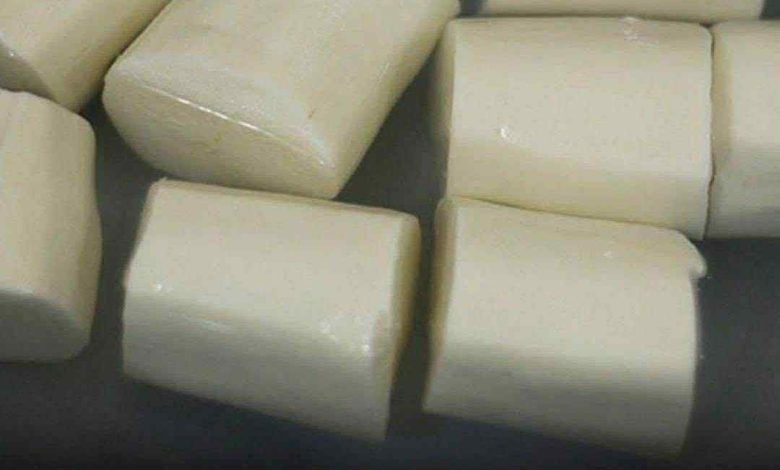
The worlds deadliest food claims over 200 lives every year, yet nearly 500 million people still eat it
The “World’s Deadliest Food” Isn’t What You Think—And Yet, It Feeds Half a Billion People Safely
Cassava, a starchy root native to South America and now grown across the tropics, is a dietary cornerstone for more than 500 million people worldwide. In places where soil is poor, rainfall unpredictable, and food security fragile, its ability to thrive where other staples struggle has made it indispensable—offering high caloric yield per acre, drought tolerance, and a flexible harvesting window that turns it into both a famine reserve and everyday sustenance. Despite that, cassava carries a paradox: when improperly handled, it can poison and even permanently maim, earning headlines as the “world’s deadliest food”—a label rooted not in inherent malevolence but in the consequences of neglecting a centuries-old knowledge system of safe preparation. (Wikipedia, UNILAD, PMC)
At its core, the danger in cassava comes from natural chemical defenses: the tuberous roots, peels, and to a lesser extent leaves contain cyanogenic glycosides—primarily linamarin and lotaustralin—that can release hydrogen cyanide when the plant’s cellular structure is disrupted (for example, by chewing or processing) and not subsequently detoxified. This is not an accident of agriculture; it is the plant’s evolutionary mechanism to deter pests and herbivores. In regions where cassava is a staple, traditional processing methods have long evolved to neutralize those compounds, turning potential toxicity into safe nourishment. But in crises—during famines, conflict, or poverty—those safeguards are sometimes shortened or skipped, leading to acute poisonings and chronic neurological disease outbreaks. (Wikipedia, PMC, Food Standards Australia New Zealand)
One of the most devastating health outcomes associated with chronic exposure to improperly processed “bitter” cassava is konzo, a sudden, irreversible paralysis of the legs that leaves victims with a characteristic “tied” or awkward gait. Konzo typically appears in epidemic form in impoverished, drought-stricken regions where people consume high-cyanide cassava while subsisting on low-protein diets—a combination that undermines the body’s ability to detoxify cyanide. Those affected often wake up one morning unable to walk, and the condition disproportionately impacts women and children. The name “konzo” itself comes from the Yaka language of southwestern Democratic Republic of Congo, meaning “tied legs,” a fitting descriptor for the debilitating motor impairment it produces. (PMC, Global Neuropsychiatry)
Beyond konzo, acute cyanide poisoning from cassava can be fatal. Symptoms typically arise hours after ingestion of insufficiently detoxified root and include dizziness, vomiting, rapid breathing, confusion, convulsions, collapse, and in severe cases, death. Chronic low-level exposure has also been linked to tropical ataxic neuropathy and goiter in vulnerable populations, further underscoring that cassava’s risk profile isn’t binary but spectrum-based—depending heavily on preparation practices and overall nutritional context. (Wikipedia, PMC)
Yet, the label “deadliest” obscures the fact that cassava, when handled correctly, is a nutritional asset. Its roots are rich in carbohydrates, offering sustained energy; they contain vitamin C and trace minerals like copper, while the leaves—after proper processing—can be significant sources of protein (albeit deficient in methionine, requiring dietary complementing). In many parts of the world, cassava’s resistant starch contributes to gut health, and its nutrient profile supports metabolic, immune, and musculoskeletal systems when consumed as part of a varied diet. (Verywell Health)
What makes cassava safe is time and technique. Effective detoxification relies on breaking down the cyanogenic glycosides and allowing volatile cyanide to dissipate. There is a hierarchy of methods, often used in combination, passed down through generations: peeling, grating or crushing to rupture cells and expose glycosides to the plant enzyme linamarase, soaking the pulp (often for 48 to 72 hours in traditional heap fermentations), followed by pressing, drying (especially sun-drying), and cooking (boiling, roasting, or fermentation into products like gari, fufu, lafun, or other regional variants). These steps can reduce cyanide levels dramatically—sometimes by more than 80 to 99%—making the final product safe. The “wetting method,” for instance, which involves spreading cassava flour in a thin layer and letting it sit to allow enzymatic breakdown and cyanide evaporation, is a shortcut used in some contexts to quickly detoxify flour for same-day use. (PubMed, Biology Assets ANU, ResearchGate, Food Standards Australia New Zealand)
International and public health bodies, including the World Health Organization, emphasize that the danger appears particularly during times of food insecurity when traditional processes are bypassed out of urgency or lack of resources. High-cyanide cassava consumed without adequate processing leads to elevated dietary cyanide exposure, contributing to both acute poisoning and the chronic conditions previously mentioned. During crises—conflict, drought, displacement—the pressure to eat quickly can outpace the time required to render cassava safe, which is why outbreaks of cyanide toxicity and konzo tend to cluster in such contexts. (UNILAD, CDC)
Public health interventions in affected regions have sought to balance reliance on cassava with education and facilitation of safer processing. Programs aimed at preventing konzo, such as those in the Democratic Republic of Congo, focus on teaching and reinforcing proper cassava detoxification techniques, improving dietary diversity to mitigate low-protein risk factors, and community monitoring to catch early signs of outbreaks. The evidence is clear: when communities adhere to time-tested preparation methods and have access to even modest protein sources, the incidence of konzo and cyanide-related morbidity drops significantly. (Global Neuropsychiatry, PMC)
For individuals and families in cassava-consuming regions, practical steps to reduce risk include ensuring sufficient soaking time (18–24 hours or more depending on method), combining crushing or grating with subsequent fermentation or drying, and never relying solely on brief soaking or superficial cooking. Sweet cassava cultivars contain far lower cyanogenic content than bitter ones, but even they require proper peeling and cooking; drought-stressed plants can have elevated toxin levels regardless of variety. Awareness campaigns also stress that no single step is enough on its own—effective detoxification is cumulative. (Wikipedia, Food Standards Australia New Zealand, ResearchGate)
When outbreaks occur, rapid identification and treatment can save lives. Acute cyanide poisoning can be treated with antidotes like sodium thiosulfate, which helps the body convert cyanide into less toxic thiocyanate, provided medical support is accessible. However, in many rural and resource-limited settings, access to clinical care is scarce, so prevention—through proper processing and nutritional support—is the most reliable safeguard. (Wikipedia, PMC)
Cassava’s story is therefore not one of a “deadly food” in isolation but of a complex relationship between a resilient crop, traditional knowledge systems, socio-economic pressures, and public health. Its capacity to feed hundreds of millions depends on the preservation and adaptation of safe preparation practices. In a world facing climate volatility and food insecurity, supporting communities with both the tools and knowledge to process cassava safely is not optional—it’s essential. (PMC, UNILAD, Global Neuropsychiatry, PubMed)




